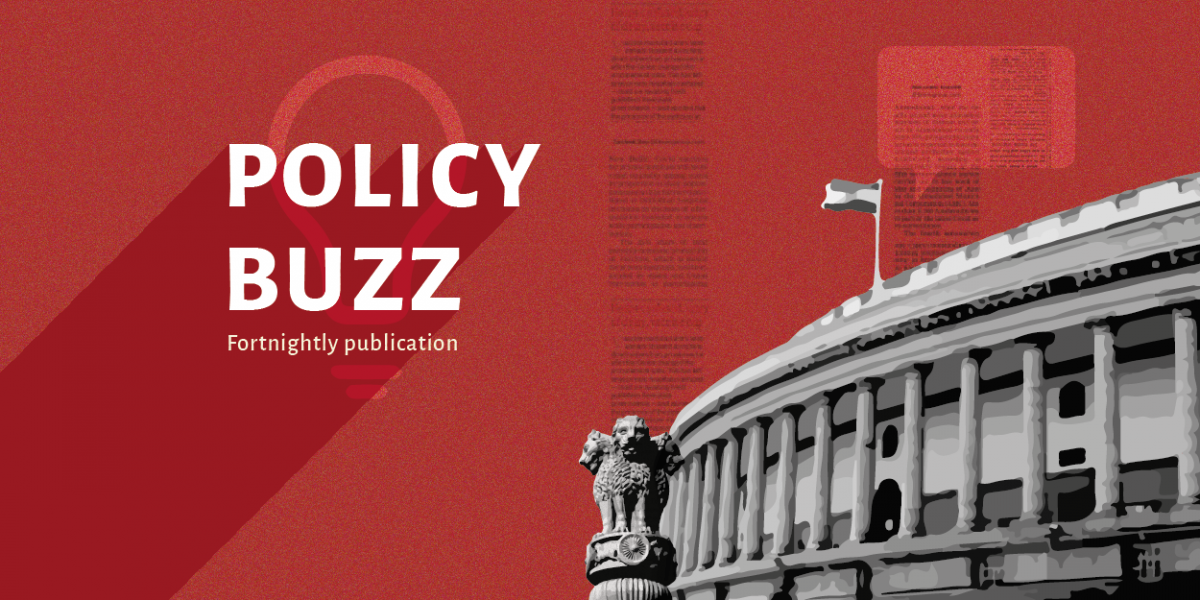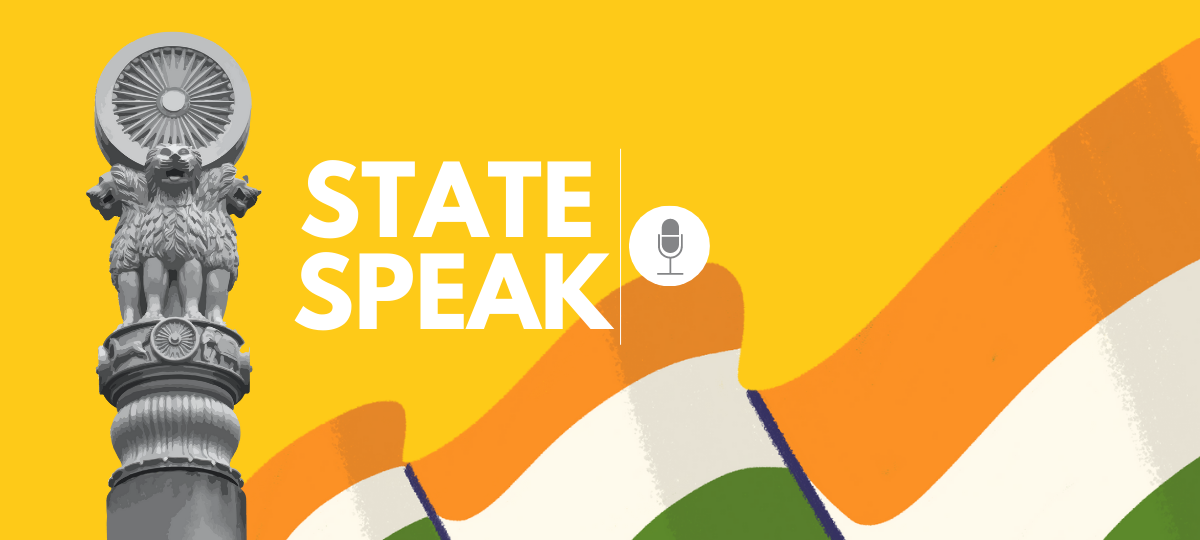The bureaucracy is considered to be the steel framework that makes the country’s development aspirations a reality, but little is understood in the public about the people behind the scenes. State Speak is an exclusive interview series by the Accountability Initiative featuring insights from IAS officers posted in India’s districts and other public officials who have a vantage point on how the country is being governed, related challenges and best practices.
In this interview, we spoke with Aditya Ranjan who serves as the Deputy Commissioner of Koderma district in Jharkhand. He is an IAS officer of the Jharkhand cadre, 2015 batch. Among other aspects of governance, he discusses the important role communities play.
Q. You have extensively worked on adult literacy, and have spoken about community participation; including the organisation of Gram Sabhas and Ratri Chaupals to bring a shift in people’s mindsets.
What challenges have you faced as local administration in organising these? Also, what role do you see of community participation in longstanding development challenges that the country faces?
Aditya Ranjan: There are multiple schemes which are being run by the government and most of the schemes actually talk of community involvement. But the real problem is that it is not happening on the ground. So what we did was a thorough orientation of the villages to create institutions like Ratri Chaupals and Gram Sabhas. The unity that we have created through these institutions has actually led to whatever has happened, be it in education or water conservation or otherwise.
Taking the example of the adult literacy programme, it is in no way going to benefit anybody directly in the near future. Somebody who has never studied for 40-50 years, if they start [to learn] counting at the age of 50, there is no direct benefit per se. So, the answer to the question — any scheme which is not going to directly benefit a person or a family cannot be successful without community participation because the very incentive of such schemes is overall improvement or development of the community.
The mindset of the whole village or the whole district is more or less the same, as I have found it, with the previous three-four districts that I have worked in. People are frustrated with most of the institutions that we have created. But the kind of change that they start seeing in their lives through community participation or such institutions is fabulous and that keeps them going.
There is a village called Bhedwa in Jainagar. When I met them in the second orientation, most of the villagers were elated by the very fact that nobody in their village was illiterate anymore.
Q. And what do the Gram Sabhas and Ratri Chaupals look like?
Aditya Ranjan: According to the Panchayati Raj Act, all the adult members of the village are also members of the Gram Sabha. We conduct Gram Sabha in such tolas and revenue villages on a weekly basis, in which the presence of all the villagers is mandatory.
For Ratri Chaupals, all the villagers sit after six or seven in the evening, depending on their timing, for an hour or so in chaupals to discuss short-term things that they can do the next day. For example, they’ll decide that tomorrow we will clean our Anganwadi or tomorrow we will plant 10 trees around the temple. They will do this the next day. These chaupals happen every day, wherein they discuss the progress of the task decided and plan the next day’s target.
After the chaupal ends, we tag the most-literate women in the village with two illiterate women. Similarly, one literate man is tagged with two illiterate men. For half an hour they sit together, so they can teach on a daily basis. In 10 to 15 days, they [the people who are illiterate] are able to write their names, and in a month they are able to do basic subtraction and addition. So this is what Ratri Chaupals looks like.
What we have observed is that 70% to 90% of the attendees are women in Ratri Chaupals. Most women only participate in Ratri Chaupals and not the weekly Gram Sabhas, where men make the majority of attendees.
There is also something called the Gram Kosh in which, on a weekly basis, every family deposits ₹10 and that money is used for all the activities that are going on in the village. Some villages, for instance, have purchased slates (chalkboards), while some villages have purchased paint brushes to paint their Anganwadi centres.
Q. On a different note, Koderma is famous for its mica and other minerals. Keeping in view sustainable development and India’s path on climate action, what are the kind of dilemmas that you are facing in administering the district and the use of its natural resources?
Aditya Ranjan: Yes, Koderma is famous for mica, but 60% of the district, in terms of area, is covered by forest. That is the reason why all mining activities – mining mica is a major mining activity – are banned in Koderma and as of today, there is no mining legally happening in Koderma. The locals pick and sell the debris that is left after the mining of mica that took place between the period of 1970s and 2000s. This is done illegally.
The biggest problem that I face as an administrator is that while I’m taking people in one direction – towards livelihood, towards self reliance – by providing them with agricultural training, layered farming, integrated farming, time and again, the contractors or the locals who are involved in these mica picking activities derail these efforts. We cannot take heavy administrative action against such picking, obviously, because you will find villages in which the whole village is involved in such activity.
The best part is, however, that over a period of time, some of the villages have themselves stopped mica picking and they are also stopping others from picking mica debris. We have at least 50-60 such villages which have done this, because they realise it is something that is not going to be long-lasting and isn’t sustainable for the future.
Q. Regions rich in natural resources often face a particular development problem wherein the resources are moved outside of the region, but the locals themselves do not prosper from this movement. What has been Koderma’s experience in terms of the prosperity of its people?
Aditya Ranjan: This is one of the reasons why the locals have stopped the mica picking activities I had mentioned previously. When we go to these villages, we often ask them how long have they been picking mica? We get responses like 20 years, 30 years, 40 years. Then I ask them, so for the last 30-40 years you have been picking mica, how many of you have a mica factory? Nobody. How many of you export mica? Nobody. How many of you have got a good education because of mica? Nobody.
How many of you have encountered contractors who have been making you pick mica, and have asked you what you need in the village — a road or school or Anganwadi centre? Never.
They have started to realise the same — that they have been doing this for the last 30 years, and there have been so many outsiders who have been coming to the villages to pick mica. But once the supply ends, they just move on to the next village.
We are heavily suffering from resource curse in Koderma. We have families who have hundreds of acres of land, which they bought when they were mica miners, and we have poor people who have multiple issues related to education, health and more.
Q. What alternative livelihood options are being offered to the people of Koderma?
Aditya Ranjan: We are majorly relying on agriculture and allied activities. We conducted a baseline survey in the villages, and are using the survey results. We are providing assistance, including training and materials, to families for one year. After one year, we will conduct a frontline assessment.
There are many government schemes and we are trying to converge the state efforts to provide optimal benefits to the people here. For example, for those trying to engage in pottery, we are delivering benefits from JSLPS (Jharkhand State Livelihood Promotion Society). Similarly, if someone has goats but not a shed, we are trying to get a shed built for them through MGNREGS. But mostly, we are trying to do agriculture and allied activities in these villages.
Q. What, as per you, will be the governance challenges that India will be looking at in the next ten years?
Aditya Ranjan: The way we are working is good, but more focus needs to be paid to community-led initiatives, because until and unless there is ownership, none of the schemes will work. We have seen how the Swachh Bharat Mission has worked in multiple places, and how it has failed in some places, and that is the way it is going to remain.
It is time to emphasise on community participation and empower the Panchayats; and in a true sense, not by simply allotting functions, finances or functionalities. Orientation and training of the Panchayat Pratinidhis or villagers is highly important. We will see that most of these schemes will only be sanctioned if it is approved by the Gram Sabha. But the Gram Sabhas that are done for such schemes are usually not genuine. Only when the Gram Sabhas are truly empowered and functional, will there be true implementation of the schemes.
Q. According to you, what will be the qualities and skills that an IAS officer will need in administering districts going forward? And what can be done to better support current public officials?
Aditya Ranjan: The most important thing that I find missing in our training, currently, is that even though we do Bharat Darshan during the training, there should be exposure visits to different sectors. The major problem which IAS officers face is that of huge ‘gearshifts’. Today I’m in rural development, tomorrow I will be in urban development, and the day after tomorrow I will be in finance.
Tomorrow, if I start working in urban development, I should see some good urban centres that have been developed in India, so that I can understand and replicate it in our places. There should be a one-week orientation, training and exposure programme before getting posted or during mid-career.
Without this, people are forced to act upon their previous understanding and knowledge. Those who are not able to understand the new context are not able to perform the way they can if they are exposed to existing models.

This interview has been edited for length and clarity.
The opinions expressed are personal and do not represent an institutional stand.
Transcription by Prateek Gupta.
Read more State Speak interviews here.










